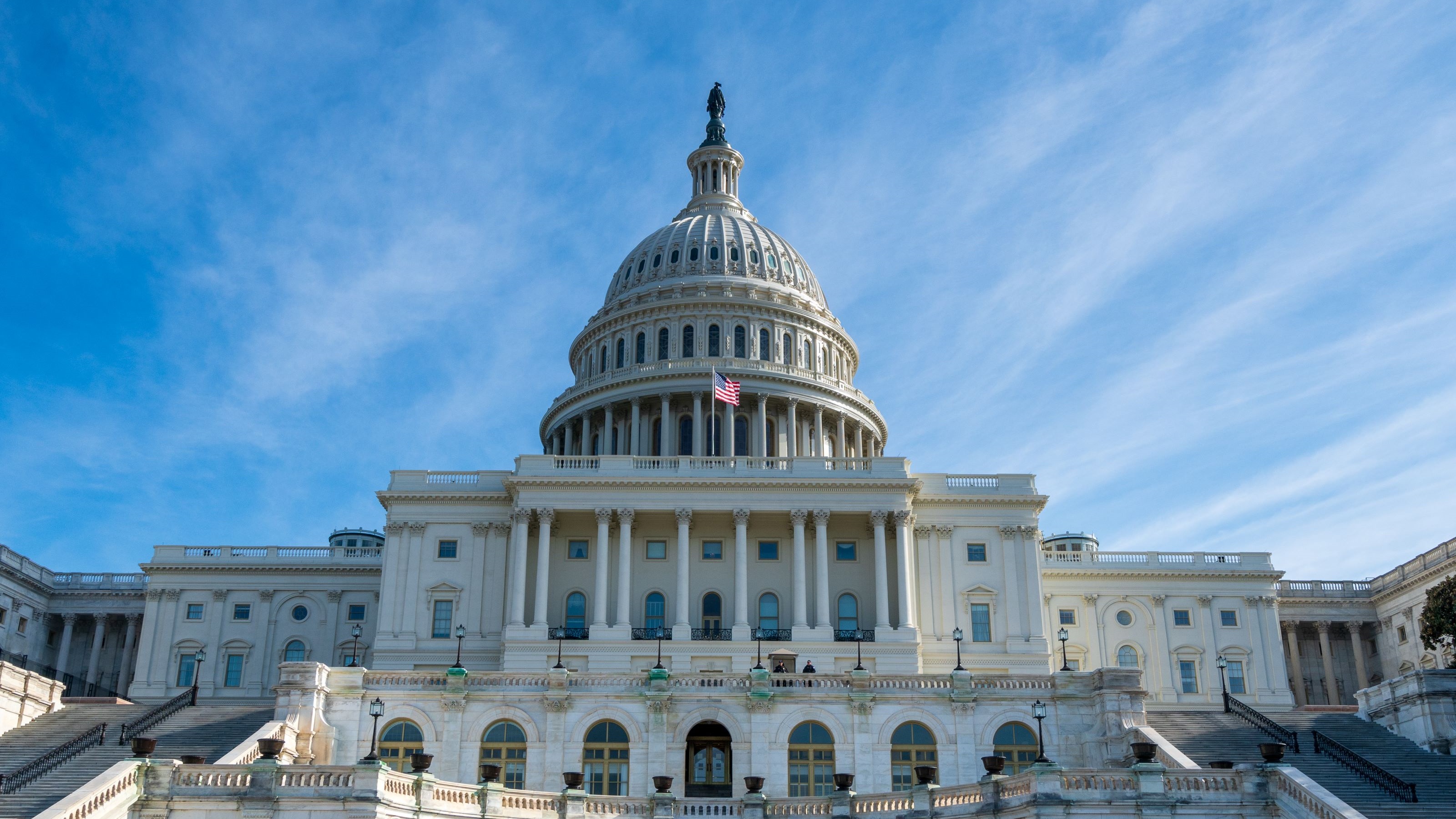Premium Tax Credit: Are You Eligible For This Health Insurance Tax Break?
The tax credit can help qualifying individuals pay for coverage from the Affordable Care Act’s health insurance marketplace.


Each year during open enrollment, millions of families flock to find affordable health insurance. If you’ve shopped for health insurance on the federal marketplace, you may be eligible for a refundable health insurance tax credit.
The premium tax credit helps qualifying individuals and families afford health insurance purchased from the federally-regulated marketplace, better known as the Affordable Care Act (ACA) online network of health insurance plans or “Obamacare.”
President Donald Trump’s newly enacted tax cuts and spending legislation, dubbed the ‘One Big Beautiful Bill’ (OBBB), includes major provisions that impact the premium tax credit (PTC) and those eligible for the tax break, particularly immigrants.
From just $107.88 $24.99 for Kiplinger Personal Finance
Become a smarter, better informed investor. Subscribe from just $107.88 $24.99, plus get up to 4 Special Issues

Sign up for Kiplinger’s Free Newsletters
Profit and prosper with the best of expert advice on investing, taxes, retirement, personal finance and more - straight to your e-mail.
Profit and prosper with the best of expert advice - straight to your e-mail.
Among the changes, GOP lawmakers failed to extend the enhanced credit, which is slated to expire by the end of 2025 unless Congress acts.
Here’s what you need to know about what’s new with the premium tax credit for 2025 and beyond.
What is the Premium Tax Credit?
The premium tax credit (PTC) is designed to help people afford the cost of health insurance purchased through the federal health insurance marketplace.
As a refundable tax credit, the individual who claims the PTC can get some or all of the credit as a tax refund. If the credit lowers your tax bill to zero, the IRS applies the remaining portion of the credit to your tax refund.
So, how does the PTC work?
The premium tax credit can be used to purchase four different plans offered through the ACA marketplace: bronze, silver, gold, and platinum.
The PTC is available immediately upon enrollment, so you can decide if you’d like payments to go directly to your insurer and lower your monthly premium or receive the credit as part of your tax refund.
If you’re eligible for the PTC, you’ll have several options for using your credit. You can:
- Receive it as a tax credit when you file your return
- Choose an advance premium tax credit and use the credit to pay your insurer in exchange for a lower monthly premium throughout the year
- Split it, receiving part of the credit on your tax refund and the rest as an advance to lower your insurance premiums
New changes to the premium tax credit
As mentioned, President Donald Trump’s comprehensive tax and spending bill was signed into law on July 4, 2025, and it includes significant changes to the premium tax credit.
Some major changes include tightening the claims and eligibility standards for those who wish to access the tax break on their health insurance plan.
The premium tax credit’s new provisions include:
- Income requirements: Prevents lawfully-present immigrants with incomes under 100% of the federal poverty level from claiming the credit, effective 2026.
- Lawfully present requirement: Restricts eligibility to verified U.S. citizens and certain qualified non-citizens, excluding those without a satisfactory immigration status, effective 2027.
- Advance payment changes: Reducing advance payments of premium tax credits for certain individuals enrolled in exchanges.
- Enrollment rules: Tightening claims, such as disallowing the premium tax credit in case of certain coverage enrolled in during the special enrollment period
- Repayment of Excess PTC: Repeals the recapture limit on excess payments of the credit.
Congress still needs to act. The ‘One Big Beautiful Bill Act’ failed to include an extension of the premium tax credit under the Affordable Care Act — which is slated to expire at the end of this year, 2025.
Who is eligible for the premium tax credit now?
To qualify for the premium tax credit, you or your family must be enrolled in a health insurance plan from the federal marketplace or your state’s healthcare marketplace for at least one month of the calendar year.
You’ll also have to pay your share of the marketplace plan premium by the original due date of your tax return.
Additionally, you must meet the following criteria:
- Not be eligible for a government program such as Medicare, Medicaid, or the Children’s Health Insurance Program (CHIP).
- Not have access to an affordable employer-sponsored insurance plan (for 2025, an employer plan is considered affordable if the premium is equal to or less than 9.02% of your household income.)
- Have a household income at or below the federal poverty level.
Currently, the PTC is also available to lawfully residing immigrants with incomes below the poverty line who are not eligible for Medicaid due to their immigration status.
Changes to eligibility standards: The OBBB eliminates the ability for undocumented immigrants to claim the premium tax credit, effective 2027. Individuals with temporary protected status, asylum applicants, or immigrants granted parole will not be able to claim the PTC as of 2027.
Your filing status also matters:
If you’re married and filing separately, you won’t be eligible for the PTC unless you are a victim of domestic abuse or spousal abandonment.
Taxpayers who are claimed as dependents will not qualify for the tax credit.
What is the federal poverty level for 2025
Taxpayers with income at or above the federal poverty line may be eligible for the premium tax credit.
To be eligible for the PTC, your income must be no more than 400% of the federal poverty line. These amounts will vary depending on your household size.
Other factors that may impact your credit amount include:
- Your address and area of residence
- The cost of your insurance coverage
Household Size | 100% | 150% | 200% | 300% | 400% |
|---|---|---|---|---|---|
1 | $15,060 | $22,590 | $30,120 | $45,180 | $60,240 |
2 | $20,440 | $30,660 | $40,880 | $61,320 | $81,760 |
3 | $25,820 | $38,730 | $51,640 | $77,460 | $103,280 |
4 | $31,200 | $46,800 | $62,400 | $93,600 | $124,800 |
5 | $36,580 | $54,870 | $73,160 | $109,740 | $146,320 |
Source: Department of Health and Human Services 2024 Poverty Guidelines. Note: Alaska and Hawaii have different federal poverty line guidelines.
PTC income limit
As mentioned, eligible taxpayers must have a modified adjusted gross income (MAGI) between 100% and 400% of the federal poverty line to receive the premium tax credit.
However, the Biden administration temporarily enhanced the premium tax credit through 2025, making people with incomes above 400% of the poverty level newly eligible for the credit if their benchmark premium exceeds 8.5% of the household income.
The benchmark is determined using the ‘second-lowest-cost silver plan’ available to your household and the maximum amount you are expected to pay toward your health insurance premium.
For 2025, individuals and families with incomes between 100% and 400% will pay no more than 8.5% of their MAGI.
Household income as a percentage of the federal poverty line | Initial percentage | Final percentage |
Less than 133% | 2.10% | 2.10% |
At least 150% but less than 200% | 4.19% | 6.60% |
At least 200% but less than 250% | 6.60% | 8.44% |
At least 250% but less than 300% | 8.44% | 9.96% |
At least 300% but no more than 400% | 9.96% | 9.96% |
Source: Internal Revenue Service
How it works:
According to calculations from the Center for Budget and Policy Priorities (CBPP), a 60-year-old couple earning $80,000 (405% of the poverty level) currently pays $567 a month for their health insurance.
If the premium tax credit expansion were to expire by the end of 2025, their market premium would more than triple to $2,026, representing an annual increase of $17,500.
How to claim the premium tax credit
The premium tax credit is available to qualifying individuals and families with a health insurance plan from the federal marketplace www.healthcare.gov or your state’s healthcare marketplace.
Once you enroll in a healthcare plan, you will automatically be told if you are eligible for the PTC based on the information you provide. Then, you can decide how you’ll use the credit:
- You can decide to use some or all of the tax credit as an advance credit payment to help lower your monthly premium bill;
- Or you can receive the tax credit as a tax refund
No matter what choice you make, you’ll need to file IRS Tax Form 8962 at tax time. The form will determine your premium tax credit eligibility and reconcile any advance credit payments you’ve already received.
Bottom line: Why the premium tax credit matters
The premium tax credit helps make health insurance purchased from your state or federal marketplace more affordable. For families and individuals, the PTC can provide immediate relief by using an advanced amount to lower your monthly premium, or you can receive the amount as a refund at tax time.
While the PTC was traditionally designed to help folks with incomes at or below the federal poverty level, temporary expansions have allowed those with incomes above the poverty line to be eligible.
During his second presidential campaign, Trump made several comments casting doubt on the future of the ACA, also known as Obamacare. The enhanced ACA, passed under the Biden administration, cut premiums nearly in half and expanded eligibility for the premium tax credit.
Many of the provisions of the PTC are set to expire at the end of 2025 unless Congress acts. So, millions of people are at risk of losing access to affordable healthcare.
GOP lawmakers failed to include an extension of the premium tax credit on their version of Trump’s ‘One Big Beautiful Bill Act,’ which has caused concerns about the future of the tax break. However, they did include some provisions that could add obstacles for certain individuals who want to claim the credit.
All eyes will be on Congress this year to see how it manages the future of the Affordable Care Act program and the premium tax credit.
Related Content
- New 2025 Child Tax Credit Announced: How Much Is It?
- Earned Income Tax Credit (EITC): How Much Will You Get?
- Open Enrollment: Common Tax Mistakes to Avoid
Profit and prosper with the best of Kiplinger's advice on investing, taxes, retirement, personal finance and much more. Delivered daily. Enter your email in the box and click Sign Me Up.

Gabriella Cruz-Martínez is a finance journalist with 8 years of experience covering consumer debt, economic policy, and tax.
Gabriella’s work has also appeared in Yahoo Finance, Money Magazine, The Hyde Park Herald, and the Journal Gazette & Times-Courier.
As a reporter and journalist, she enjoys writing stories that empower people from diverse backgrounds about their finances, no matter their stage in life.
-
 The 7-Month Deadline That Sets Your Lifetime Medicare Premiums
The 7-Month Deadline That Sets Your Lifetime Medicare PremiumsUnderstanding Medicare enrollment is crucial, as missing deadlines can lead to permanent late enrollment penalties and gaps in coverage.
-
 Retirees Living in Portugal: You Need a Post-NHR Tax Strategy
Retirees Living in Portugal: You Need a Post-NHR Tax StrategyWhen your 10-year Non-Habitual Resident tax break ends, you could see your tax rate soar. Take steps to plan for this change well before the NHR window closes.
-
 Target-Date Fund Innovation: Built-In Income Guarantees
Target-Date Fund Innovation: Built-In Income GuaranteesWith target-date funds falling short on income certainty, retirement plans should integrate guaranteed income solutions. Here is what participants can do.
-
 Law Reversal Looming? Trump Eyes 2026 Gambling Winnings Tax Change
Law Reversal Looming? Trump Eyes 2026 Gambling Winnings Tax ChangeTax Deductions It's no secret that the IRS is coming after your gambling winnings in 2026. But how long will that last?
-
 Trump's Plan to Eliminate Income Tax: 7 Things to Know Now
Trump's Plan to Eliminate Income Tax: 7 Things to Know NowTax Policy The potential consequences of eliminating taxes in favor of Trump tariffs could impact everything from inflation to Social Security and might give some U.S. taxpayers pause.
-
 5 Types of Gifts the IRS Won’t Tax: Even If They’re Big
5 Types of Gifts the IRS Won’t Tax: Even If They’re BigGift Tax Several categories of gifts don’t count toward annual gift tax limits. Here's what you need to know.
-
 The 'Scrooge' Strategy: How to Turn Your Old Junk Into a Tax Deduction
The 'Scrooge' Strategy: How to Turn Your Old Junk Into a Tax DeductionTax Deductions We break down the IRS rules for non-cash charitable contributions. Plus, here's a handy checklist before you donate to charity this year.
-
 IRS Says You Made a Tax Return Mistake? A New Law Could Help You Fight Back
IRS Says You Made a Tax Return Mistake? A New Law Could Help You Fight BackTax Law Updated taxpayer protections change what the IRS must explain on error notices and how long you have to respond.
-
 Tax Refund Alert: House GOP Predicts 'Average' $1,000 Payouts in 2026
Tax Refund Alert: House GOP Predicts 'Average' $1,000 Payouts in 2026Tax Refunds Here's how the IRS tax refund outlook for 2026 is changing and what steps you can take now to prepare.
-
 New IRS Changes to FSA Contribution Limits for 2026: What to Know
New IRS Changes to FSA Contribution Limits for 2026: What to KnowHealth Care Flexible Spending Accounts have tax advantages worth looking into, especially in light of new IRS changes.
-
 Is a New $25,000 Health Care Tax Deduction Coming in 2026?
Is a New $25,000 Health Care Tax Deduction Coming in 2026?Tax Policy A proposal from GOP Sen. Josh Hawley adds to the chatter about health care affordability.